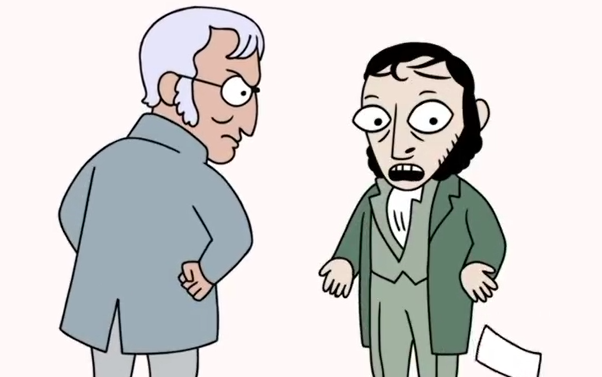OK, today we're going to talk about the mole.
今天我們來談一下摩爾。
Now, I know what you're thinking: "I know what a mole is, it's a small furry creature that digs holes in the ground and destroys gardens."
我知道你現在在想:“我知道摩爾是什么,它是毛茸茸的小生物,挖洞和破壞花園。”
And some of you might be thinking that it's a growth on your aunt's face with hairs sticking out of it.
有些人也許會認為它是阿姨臉上帶有幾根細毛的痣。
Well, in this case, a mole is a concept that we use in chemistry to count molecules, atoms, just about anything extremely small.
但今天所講的摩爾,是化學中的一個概念,用來計算分子、或是任何極小物質的數量。
Have you ever wondered how many atoms there are in the universe? Or in your body? Or even in a grain of sand?
你曾經想過這個宇宙,或是你的身體、或是一粒沙子里到底有多少原子嗎?
Scientists have wanted to answer that question, but how do you count something as small as an atom?
科學家想解決這個問題,但是你要如何計算小到像原子一樣的東西?
Well, in 1811, someone had an idea that if you had equal volumes of gases, at the same temperature and pressure, they would contain an equal number of particles.
在1811年,有個人突發奇想,認為如果氣體體積相同,在同等溫度及壓力下,它們應該會有相同的分子數量。
His name was Lorenzo Romano Amedeo Carlo Avogadro.
這個人的名字是阿莫迪歐阿伏加德羅。
I wonder how long it took him to sign autographs.
我很好奇他簽個名要花多長時間。

Unfortunately for Avogadro, most scientists didn't accept the idea of the atom, and there was no way to prove he was right.
不幸的是,大部分科學家不接受這個想法,而他也沒有方法可以證明他是對的。
There was no clear difference between atoms and molecules.
原子和分子之間并沒有明顯的差異。
Most scientists looked at Avogadro's work as purely hypothetical, and didn't give it much thought.
大多數科學家認為阿伏加德羅的理論純粹是個假說,并沒有特別去思考這件事。
But it turned out he was right! By late 1860, Avogadro was proven correct, and his work helped lay the foundation for the atomic theory. Unfortunately, Avogadro died in 1856.
但事實證明他是對的!1860年底,阿伏加德羅的想法被證明是對的,而且他的努力奠定了原子理論的基石。不幸的是,阿伏加德羅死于1856年。
Now the thing is that the amount of particles in even small samples is tremendous.
現在的問題是,即使是小東西,它上面的分子總數也是非常巨大的。
For example, if you have a balloon of any gas at zero degrees Celcius, and at a pressure of one atmosphere, then you have precisely six hundred and two sextillion gas particles.
比如,假使你有一個裝有任何氣體的汽球,在零攝氏度和一大氣壓的條件下,那你會有602乘10的21次方個氣體分子。
That is, you have six with 23 zeros after it particles of gas in the container.
就是6后面帶有23個0,這么多個分子在里面。
Or in scientific notation, 6.02 times10 to the 23rd particles.
或用科學記號表示為6.02×10的23次方個分子。
This example is a little misleading, because gases take up a lot of space due to the high kinetic energy of the gas particles, and it leaves you thinking atoms are bigger than they really are.
這個例子有點兒誤導人,因為高動能的氣體分子會占用較大的空間,這讓你感覺原子比原來的大。
Instead, think of water molecules.
相對地,我們看一下水分子。
If you pour 18.01grams of water into a glass, which is 18.01 milliliters, which is like three and a half teaspoons of water, you'll have 602 sextillion molecules of water.
如果你倒18.01克的水到杯子里,就是18.01毫升,大約是三個半茶匙的水,你就有602乘以10的21次方個水分子。
Since Lorenzo Romano, uh, never mind, Avogadro was the first one to come up with this idea, scientists named the number 6.02 times 10 to the 23rd after him.
自從洛倫佐·羅馬諾...嗯,算了。阿伏加德羅是第一位提出這個想法的人,科學家用他的名字來命名6.02乘以10的23次方這個數字。
It is simply known as Avogadros's number.
這就是熟知的阿伏加德羅常數。


